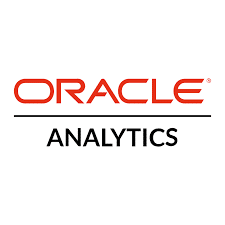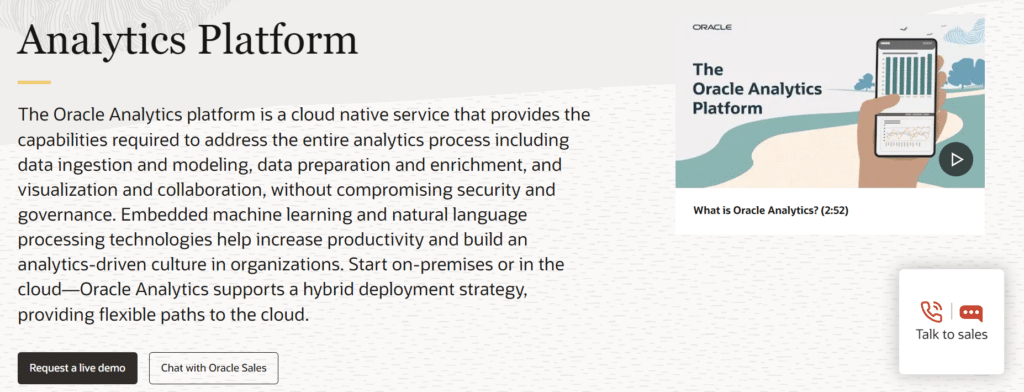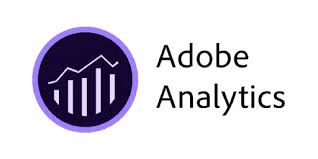
Whether you’re looking for anomaly detection tools, simulation capabilities, data visualization, or a combination of predictive analytics features, there are tools out there to get the job done.
To help you find the right fit, we’re going to examine some of your best options, along with other information about best practices, techniques, and examples for a well-rounded look.
What Is Predictive Analytics?
Predictive analytics encompasses a variety of practices with the same goal: forecasting future outcomes.
These practices include using:
- Historical data
- Machine learning
- Statistical models
Businesses can predict events such as customer behavior, market shifts, and potential risks based on patterns in past information.
How Predictive Analytics Works
Predictive analytics uses algorithms to comb through past data to uncover relationships and trends that may indicate future outcomes. The models generated help organizations predict future scenarios for everything from sales to equipment maintenance.
We discuss the differences between predictive and prescriptive analytics in this article.
Applications of Predictive Analytics in Business
Predictive analytics has applications in all industries.
Here are some examples of how businesses use it:
Forecasting and Risk Mitigation
Predictive analytics is integral for forecasting market movements and managing risk in financial institutions. Banks can use it to make credit risk assessments based on customer activity and history, tailoring lending decisions more precisely.
This methodology also benefits fraud detection; predictive features can flag suspicious activity before it becomes an issue.
Predictive analytics assists investment firms with portfolio management by predicting market movement and asset performance.
Predictive models can predict the trajectory of stock prices, interest rates, or changes in foreign exchange, leading to more accurate predictions that can guide investment strategy.
Optimizing Supply Chains and Operations
Beyond finance, businesses with complex supply chains use predictive analytics to increase efficiencies.
By analyzing demand pattern data from previous years and assessing sales year on year, businesses can better anticipate what they will need in the future. Ideally, this helps them avoid overproduction or stockouts.
Predictive analytics gives a firm a clear insight into its inventory needs and allows it to streamline supply chain processes to reduce costs.
Furthermore, these predictive models allow companies to anticipate operational bottlenecks and potential disruptions. Once identified, they can adjust to avoid these and other costly delays.
Targeted Marketing and Customer Retention
Predictive analytics is proving invaluable in marketing for improving customer engagement.
Companies use it to predict purchasing behavior, allowing for more tailored marketing strategies that resonate with individual preferences. This shift toward personalized marketing yields more impressive results than broad-based advertising efforts often can.
Businesses are also using predictive tools to focus on customer retention. Retailers can use predictive analytics to determine which customers will likely buy again and target the right audience with their marketing.
Improving Cash Flow and Financial Health
Predictive analytics are becoming increasingly popular among firms’ finance departments thanks to how they improve cash management.
Using historical data on a company’s financial performance, predictive models predict future cash flow patterns and identify possible problems with cash availability. Then, businesses can plan accordingly and avoid liquidity issues.
Predictive models also help with budgeting and forecasting. They can provide a more accurate picture of forthcoming revenue and expenses, allowing for adjustments to corporate finances to best meet market conditions and business goals.
Talent Management and Workforce Planning
In human resources, predictive analytics analyzes workforce data to identify future high-performing staff through talent management.
Through data analysis, human resources departments can determine who is most likely to leave and what factors make an employee more likely to quit the company. Ultimately, this allows management to take preventative measures to improve work satisfaction and retention.
Predictive tools also help with workforce planning—anticipating when companies will need to hire new staff based on forecasted business growth—and for hiring, anticipating when staff will quit or slow down their production rate.
Predictive Analytics: Techniques
Before we get to the best tools for the job, let’s take a quick look at some of the common predictive analytics techniques.
- Regression Analysis: Use regression analysis to understand relationships between variables. Linear regression predicts a result starting with known variables, and logistic regression predicts results with only two possible outcomes.
- Decision Trees: A model that helps make decisions using branches that split data. Each branch represents one possible outcome of a set condition and can be used to predict possibilities.
- Neural Networks: These networks are complex data models loosely modeled on the human brain. They comprise many layers of processing units, particularly suited to recognizing complex patterns in data and iteratively making better predictions using machine learning.
- Time Series Analysis: Models built on data points collected or observed at regular intervals, such as ARIMA, use past data patterns to predict future events.
- Random Forests: A group of multiple decision trees that provides predictions and averages them out for a more precise result. It’s a highly versatile machine-learning algorithm that can be used with several different data types.
- K-Nearest Neighbours (KNN): An proximity-based algorithm that classifies a new data point based on the class of its K nearest “neighbors” in the dataset. It can be used in classification as well as prediction.
- Support Vector Machines (SVM): SVM finds a boundary that best separates the data classes. It’s used for classification and regression problems, where each new data point is assigned a value.
- Bayesian Networks: Probabilistic models that use a directed graph to show the relationships between variables; often used in decision-making to determine probabilities.
- Ensemble Learning: Ensemble learning is a technique in which the performance of several models is combined to improve prediction. For example, gradient boosting combines multiple models to predict an outcome while bagging averages predictions from several models.
Top 5 Predictive Analytics Tools
Now that we have a better idea of what these tools can do, let’s move on to discussing the specific tools themselves.
1. Datarails

Datarails already has some predictive analytics tools built into its software, with more being added. It now includes a next-generation AI feature that allows organizations to make proactive rather than reactive data-driven decisions.
Known for making it easy to automate data consolidation, reporting, and planning, Datarails allows users to continue to use their own Excel spreadsheets and financial models.
The platform enhances productivity, automates repetitive processes, and offers features that streamline financial workflows.
Datarails also offers other impressive tools and solutions, including AI-powered FP&A chat (the world’s first complete generative AI assistant for FP&A), a mobile app, and advanced financial reporting capabilities.
Pros:
- User-friendly
- Highly-rated
- Flexible
- Has a mobile app
Cons:
- Does not offer a free trial or free version
Pricing:
- Custom pricing based on organization size
Ratings:
- G2: 4.7/5 (150+ reviews)
- Capterra: 4.8/5 (80+ reviews)
2. SAP Analytics Cloud

SAP Analytics Cloud (SAC) is a comprehensive SaaS platform for business intelligence (BI), planning, and predictive analytics.
SAP supports scenario-based planning—users can create budgets and projections with what-if scenarios. It features collaboration tools and powerful data visualization, helping teams easily understand and discuss plans.
The pre-built business content is based on best practices and accelerates the planning process.

Pros:
- Integration with other SAP solutions
- Predictive planning with what-if scenarios
- Data visualization capabilities
- Cloud-based solution
- Over 100 prebuilt best-practice SAP business content packages
Cons:
- Data presentation can sometimes lack clarity
- Loading live models can be slow
- Some users note a learning curve
Pricing:
- Free 30-day trial
- Enterprise pricing is custom; business pricing starts at $36.
Ratings:
- G2: 4.2/5 (500+ reviews)
- Capterra: 4.4/5 (100+ reviews)
3. Oracle Analytics

Oracle Analytics is an open, cloud-native service for the end-to-end analytics lifecycle. It includes data ingest, modeling, preparation, and visualization with built-in security and governance.
It incorporates machine learning and natural language processing to boost productivity and decision-making. The platform enables and allows the flexibility of cloud, on-premises, and hybrid deployment.

Pros:
- Integrates with a wide range of Oracle and non-Oracle data sources
- Offers machine learning and data preparation tools
- Supports multiple deployment options, including hybrid setups
Cons:
- Can be complex for those unfamiliar with Oracle products
- Some users not setup time can be long
- Steep learning curve
Pricing:
- Free 30-day trial
- Contact Oracle Analytics for pricing
Ratings:
- G2: 4.1/5 (300+ reviews)
- Capterra: 4.2/5 (16 reviews)
4. Alteryx

Alteryx is a platform designed to simplify data access and analytics. It is meant for users of all skill levels, which makes it well-suited to teams without extensive technical expertise.
With augmented machine learning, users can also create predictive models without coding.
It provides an end-to-end collaboration solution, covering everything from data preparation to reporting.
Pros:
- Highly-rated
- Intuitive
- Speeds up and simplifies data prepping and cleansing
Cons:
- Cost
- Learning curve
- Some users note limitations in visual tools
Pricing:
- Designer Cloud: Starts at $4,950
- Designer Desktop: $5,195
- Machine Learning solution (predictive modeling functionality) sold separately—pricing available upon request
Ratings:
- G2: 4.6/5 (600+ reviews)
- Capterra: 4.8/5 (97 reviews)
5. Altair

Altair provides AI and data analytics solutions designed to help organizations harness the full value of their data. Its predictive analytics tools are valuable for maintenance, supply chain optimization, and process automation, all of which can reduce operational costs.
It includes solutions for fraud detection, credit scorecards, and disaster avoidance. Altair solutions can be deployed on-premises, in the cloud, or as a hybrid option.

Pros:
- Reasonably priced
- Easy to use if you know SAS programming
- Easy setup
Cons:
- Some users note confusing and unpolished UX
- Limited integration with major cloud platforms
- Challenges with large datasets
Pricing:
- Available on request
Ratings:
- G2: 4.1/5 (20+ reviews)
- Capterra: 3.9/5 (18 reviews)
6. Adobe Analytics

Adobe Analytics is a popular predictive analytics tool that integrates Adobe Audience Manager and Adobe Analytics to aggregate and analyze large volumes of data.
The platform supports data collection from multiple digital channels, giving businesses a complete view of customer journeys with real-time data insights. Its intuitive analytics features, anomaly detection, and intelligence alerts are stand-out features.

Pros:
- Intuitive UX
- Advanced reporting capabilities
- Has a mobile app
Cons:
- Can be slow
- Limited “out of the box” integrations
- Some users report limited flexibility
- Cost can be high for small businesses
Pricing:
- Contact Adobe Analytics for pricing
Ratings:
- G2: 4.1/5 (1000+ reviews)
- Capterra: 4.5/5 (200+ reviews)
Conclusion: The Best Predictive Analytics Tools
These six tools are excellent examples of what predictive analytics software can do. While the right solution will vary depending on each organization’s needs, you’ll find what you’re looking for in this list.
Looking for more data analytics insights?
Try one of these articles next: